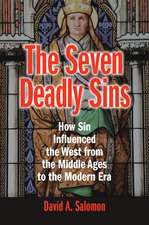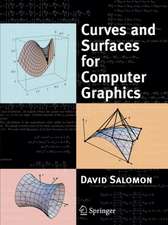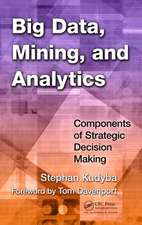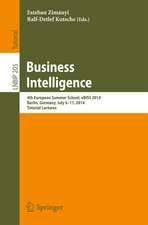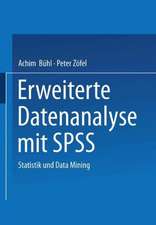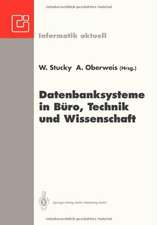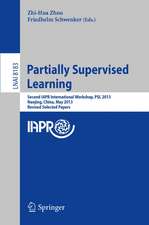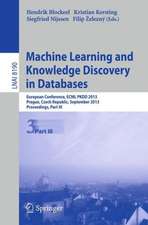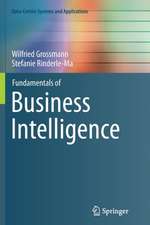A Guide to Data Compression Methods
Autor David Salomonen Limba Engleză Paperback – 8 feb 2002
Preț: 336.02 lei
Preț vechi: 420.02 lei
-20% Nou
Puncte Express: 504
Preț estimativ în valută:
64.30€ • 67.31$ • 53.20£
64.30€ • 67.31$ • 53.20£
Carte tipărită la comandă
Livrare economică 07-21 aprilie
Preluare comenzi: 021 569.72.76
Specificații
ISBN-13: 9780387952604
ISBN-10: 0387952608
Pagini: 295
Ilustrații: XII, 295 p.
Dimensiuni: 178 x 254 x 17 mm
Greutate: 0.52 kg
Ediția:2002
Editura: Springer
Colecția Springer
Locul publicării:New York, NY, United States
ISBN-10: 0387952608
Pagini: 295
Ilustrații: XII, 295 p.
Dimensiuni: 178 x 254 x 17 mm
Greutate: 0.52 kg
Ediția:2002
Editura: Springer
Colecția Springer
Locul publicării:New York, NY, United States
Public țintă
Professional/practitionerCuprins
1. Statistical Methods.- 1 Entropy.- 2 Variable-Size Codes.- 3 Decoding.- 4 Huffman Coding.- 5 Adaptive Huffman Coding.- 6 Facsimile Compression.- 7 Arithmetic Coding.- 8 Adaptive Arithmetic Coding.- 2. Dictionary Methods.- 1 LZ77 (Sliding Window).- 2 LZSS.- 3 LZ78.- 4 LZW.- 5 Summary.- 3. Image Compression.- 1 Introduction.- 2 Image Types.- 3 Approaches to Image Compression.- 4 Intuitive Methods.- 5 Image Transforms.- 6 Progressive Image Compression.- 7 JPEG.- 8 JPEG-LS.- 4. Wavelet Methods.- 1 Averaging and Differencing.- 2 The Haar Transform.- 3 Subband Transforms.- 4 Filter Banks.- 5 Deriving the Filter Coefficients.- 6 The DWT.- 7 Examples.- 8 The Daubechies Wavelets.- 9 SPIHT.- 5. Video Compression.- 1 Basic Principles.- 2 Suboptimal Search Methods.- 6. Audio Compression.- 1 Sound.- 2 Digital Audio.- 3 The Human Auditory System.- 4 Conventional Methods.- 5 MPEG-1 Audio Layers.- Joining the Data Compression Community.- Appendix of Algorithms.
Recenzii
From the reviews:
"The author has done an excellent job. He has written a practical guidebook that covers the range of compression issues, from arithmetic compression to wavelet compression, passing through compression methods for static images, video, and audio. The mathematical framework used in comprehensive without being messy. The author describes every method with no more than the necessary mathematical theory. He also provides easy-to-follow examples, which solve the few doubts the reader might have after reading the theory." --Computing Reviews
"The current book is intended for people interested in a basic understanding of the increasingly important field of data compression … . this book is nicely written and well organized. … the author has done a very good job in explaining all these complicated concepts, and presenting related algorithms and their analysis, with a minimal amount of mathematics. This is remarkable. Another good feature of this book is that… it contains many examples that are well chosen, easy to follow, and real." (Zhizhang Shen, Zentralblatt Math, Vol. 996 (21), 2002)
"The author has done an excellent job. He has written a practical guidebook that covers the range of compression issues, from arithmetic compression to wavelet compression, passing through compression methods for static images, video, and audio. The mathematical framework used in comprehensive without being messy. The author describes every method with no more than the necessary mathematical theory. He also provides easy-to-follow examples, which solve the few doubts the reader might have after reading the theory." --Computing Reviews
"The current book is intended for people interested in a basic understanding of the increasingly important field of data compression … . this book is nicely written and well organized. … the author has done a very good job in explaining all these complicated concepts, and presenting related algorithms and their analysis, with a minimal amount of mathematics. This is remarkable. Another good feature of this book is that… it contains many examples that are well chosen, easy to follow, and real." (Zhizhang Shen, Zentralblatt Math, Vol. 996 (21), 2002)


